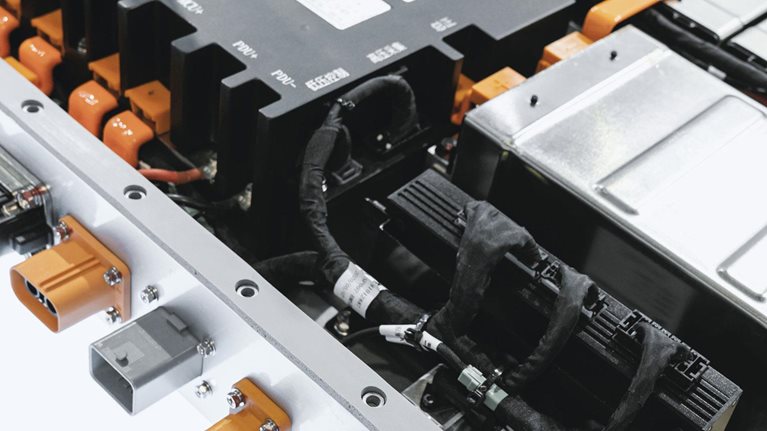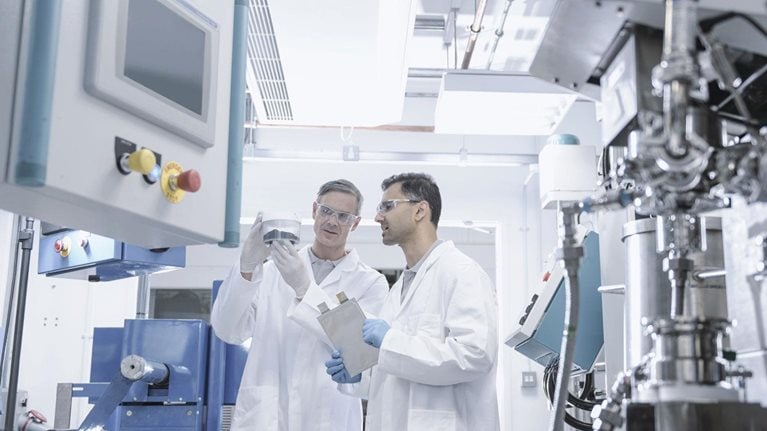Electrification is one of the key trends shaping the global energy transition. And due to recent geopolitical developments, favorable economics, and the demand for decarbonization, the pace of this trend is set to accelerate.
Surging demand brings opportunities along the electrification value chain. Demand is already increasing for key assets including wind and solar systems to supply green power, heat pumps to decarbonize the space and water heating of buildings, battery energy storage systems to respond to an increasingly intermittent grid, electrolyzers to produce green hydrogen, and electric-vehicle charging infrastructure to support a paradigm shift in the mobility industry. The growing demand for assets creates knock-on demand for a broad variety of key components and raw materials.
To capture these opportunities, companies along the value chain must understand and anticipate emerging developments and act quickly to increase production or adjust their portfolio mix. The key questions and actions required will vary by type of company—they will be different for utilities and developers, for OEMs, and for component manufacturers and raw-material providers. The companies that emerge as industry leaders will be those that take action now and back up their plans with judicious investment.
This article offers a quantitative perspective on the opportunities unlocked through electrification, including an assessment of value pools for critical enablers and components. Increased electrification also comes with many barriers—especially risks involving supply chain bottlenecks—but these will be the focus of a future article.1
Electrification is under way, and demand is surging across the value chain
Recent years have seen a strong uptick in electrification rates in specific sectors, especially passenger cars. Even on its current trajectory, without further acceleration of decarbonization targets, demand for electricity as a proportion of the global energy consumption mix is projected to rise rapidly in the coming years. McKinsey’s Global energy perspective 2022 projects that electricity demand will more than triple, rising from about 83 million terajoules (TJ) in 2020 to more than 252 million TJ in 2050.
Multiple factors are contributing to the rise of electrification. Foremost is the urgent need to replace fossil fuels and prevent climate change, an imperative that has prompted many countries to strive for net-zero emissions by 2050. Electrification is also driven by economics as technologies become cheaper and more competitive. Our analysis indicates that electric vehicles, for example, are already cost competitive (when including subsidies) in many European countries today on a per-kilometer basis, and increasing gas commodity prices have substantially improved the financial attractiveness of residential heat pumps over alternatives.2 The war in Ukraine has also led to surging energy prices and complications in the oil and gas supply chains, which are further accelerating the electrification shift as countries attempt to reduce costs and become more self-reliant.
The anticipated and accelerating boom in electrification unlocks significant value creation opportunities across the electrification value chain, including in assets, components, and raw materials.
Assets
Key assets across electrification sectors are already seeing an increase in demand, with further strong growth anticipated. The following are some of those assets:
- Wind power systems. These systems—both onshore and offshore—are key for renewable-energy generation and are thus already well established in key markets such as Europe. Growth rates continue to be high: investments in wind energy increased by more than 70 percent from 2019 to 2021 in Europe, reaching €41 billion.3
- Solar photovoltaic (PV) systems. These systems are already well established as a renewable-energy generation technology, with demand especially strong in regions with high solar radiance.
- Heat pumps. These enable the replacement of high-emissive gas and oil boilers in residential and commercial buildings with electricity-based, low-carbon alternatives. European annual heat pump sales reached 2.0 million units in 2021 (an increase of around 30 percent from 2019) and are expected to double by 2026, which would mean installing about 16.5 million additional units in the next five years.4
- Battery energy storage systems (BESS). These systems enable the storage of intermittent renewable-power generation and have important residential, commercial, industrial, and utility-scale applications due to the need for increased grid flexibility. Global battery production capacities increased sixfold between 2016 and 2020, and the latest announcements from battery manufacturers indicate that this trajectory is likely to continue.5
- Electrolyzers. Used in green-hydrogen production, these will be critical in decarbonizing industry processes. Three electrolyzer technologies are likely to become key: polymer electrolyte membrane (PEM), alkaline water electrolysis (AWE), and solid oxide electrolyzer cell (SOEC). In the past six months, the number of confirmed hydrogen-related projects to come online by 2030 has increased by more than 20, reaching more than 100.6
- Electric-vehicle charging infrastructure (EVCI). This infrastructure is a key enabler of increased mobility electrification and the move away from internal-combustion engines. A wide network will need to be established to allow for fast and convenient charging.
Of these key electrification assets, wind power may be the greatest source of revenue (Exhibit 1).7 The time period of 2021 to 2030 could mean about $1.8 trillion in aggregate for OEMs from sales of hardware related to wind power. Solar PV provides the second-largest revenue pool, followed by residential and commercial heat pumps. The revenue pools from these assets would be even larger with the addition of revenues from software and service offerings.

Technologies related to wind, solar PV, and heat pumps are already mature and have been widely adopted in many countries, especially in Europe. As a result, they offer significant revenue generation opportunities over the next decade, given that uptake is projected to grow significantly as a result of decarbonization efforts and further improvements in economics. BESS and electrolyzers are less mature, which means that they offer more opportunities for innovation and optimization, as well as greater growth potential if adoption surges. Annual hardware revenue growth in these two categories is expected to exceed 20 percent globally from 2021 through 2030, far surpassing that of wind, solar PV, heat pumps, and EVCI.
Components
When breaking down the electrification assets into specific components, we see that most of the total value from each asset comes from a few key components (Exhibit 2), creating significant opportunities for those involved in their manufacture and distribution. These components vary significantly by asset. With wind power assets, for instance, about a third of cumulative revenues from 2021 to 2030 are likely to come from blades (16 percent), towers (12 percent), and generators (7 percent). By contrast, modules will constitute about half of revenues for solar PV components, while the control unit and compressor will account for 43 percent of heat pump component revenues.

Despite the diversity of components, electrification technologies often share some common characteristics, creating opportunities for companies to produce components with multiple applications. For instance, power electronics are essential for all electrification assets to perform up and down power conversion as well as rectification and AC-DC and DC-AC conversion, respectively. In the five years from 2020 to 2025, the market is expected to grow by 13 percent annually to more than $15 billion.
The growing importance of power electronics is a major driver of semiconductor demand. For example, demand from industrial electronics, which accounts for about 10 percent of total semiconductor demand, is expected to increase by 9 percent annually between 2020 and 2025.8
Raw materials
Electrical equipment requires different types of raw materials in various combinations, which means that demand for raw materials is set to soar. An increase in demand for assets therefore creates knock-on opportunities for miners, refiners, and other companies involved in the value chain of the corresponding raw materials.
For most electrification assets—including the six listed above—steel is essential. Steel demand for key electrification assets will grow more than 8 percent per annum by 2030, compared with an expected 1 percent for total steel demand.9 While forecasts predict sufficient supply of steel, the demand for low-carbon-footprint (green) steel has increased due to decarbonization pressures. Green steel could be in short supply through 2030, with green premiums of $200 to $350 per metric ton through 2025 and possibly as much as $500 per metric ton through 2030.10
Demand for copper is also skyrocketing, partly because renewable-energy systems contain up to 12 times more copper than traditional energy systems such as fossil fuel power plants.11 Driven by growing asset demand, the amount of copper needed to produce solar PV, for instance, is expected to double between 2020 and 2030. Any future mismatch between supply and demand could interfere with the production of many electrification assets.
Furthermore, many other raw materials are expected to see a large uptick in demand as electrification assets become popular. Rare earths such as neodymium and praseodymium are critical for wind power, for example. Polysilicon, gallium, Class 1 nickel, lithium, and cobalt will also be in high demand.
To ensure sufficient supplies, mining and refining capacity will have to increase worldwide—a step that will require significant and timely investment.
Setting a new course to capture value
The companies most intimately involved in developing and scaling electrification assets—and thus best positioned to capture the opportunity at hand—are utilities and developers, integrators and assemblers, component manufacturers, raw-material providers, and other industrials.
To seize the opportunities of rapid electrification, these companies must act quickly to ramp up production or adjust their portfolios (Exhibit 3). The actions required will vary by stakeholder.

Utilities and developers
Downstream players must understand the supply landscape and derisk their supply chains by, for example, securing long-term supply and forming partnerships or joint ventures with suppliers.
Major electric-vehicle companies, for instance, have been among the quickest to secure their supply of raw materials because they expect a strong surge in battery demand. They have moved quickly to form partnerships and develop long-term contracts with suppliers of cobalt, lithium, nickel, and other key raw materials. Furthermore, major companies along the automotive value chain are joining forces to make their supply chains more resilient.
Integrators and assemblers
Integrators and assemblers must prepare to capture the opportunities of increased future scale by expanding production capacities and adjusting their product portfolios and expertise to unlock high-value, high-growth technologies. Their options include investing resources and sustained management attention in organic growth, partnering, or pursuing inorganic growth by acquiring other companies to expand production capacity or import the expertise to fill critical capability gaps.
Component manufacturers and raw-material providers
Companies in the component and raw-material space must assess the anticipated increase in demand for their products and—like integrators and assemblers—must work to better understand the changing demand needs of their future customers. In many cases, the current go-to-market strategy may not be appropriate for the scale and variety of customers and partners they will need to interact with in the future.
Moreover, component manufacturers and raw-material providers should identify how their capabilities can be used or adapted to enable new technologies and should adapt their offerings and expand production capacity to meet future demand. Most major steel producers, for example, have already announced their intention to open low-CO2 flat steel factories in Europe or to develop the new capabilities to respond to the increasing demand for low-carbon alternatives to existing products.
Rapid electrification will create new and growing value pools for companies across the value chain, from assets to components and raw materials. The companies that capture this opportunity will be those that can both anticipate key trends early on and pivot quickly to develop new capabilities or boost capacity. These investments will pay off in the years to come.

